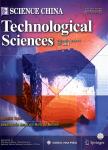Two-flux method for radiation heat transfer in anisotropic gas-particles media
Two-flux method for radiation heat transfer in anisotropic gas-particles media作者机构:Institute for Thermal Power EngineeringZhejiang UniversityHangzhou 310027China LESPUMR 6614/CORIACNRSUniversitéet INSA de RouenBP1276801Saint Etienne du RouvrayFrance
出 版 物:《Science China(Technological Sciences)》 (中国科学(技术科学英文版))
年 卷 期:2004年第47卷第6期
页 面:625-640页
核心收录:
基 金:the sponsorship by le Ministère de la Recherche de France the Programme Sino-Francais de Recherches Avancées (PRA E01-06: Combustion propre : aspects numériques et expérimentaux) the National Natural Science Foundation of China (Grant No.N50106015)
主 题:radiative transfer two-flux anisotropic
摘 要:Two-flux method can be used, as a simplification for the radiative heat transfer, to predict heat flux in a slab consisting of gas and particles. In the original two-flux method (Schuster, 1905 and Schwarzschild, 1906), the radiation field was assumed to be isotropic. But for gas-particles mixture in combustion environments, the scatterings of particles are usually anisotropic, and the original two-flux method gives critical errors when ignoring this anisotropy. In the present paper, a multilayer four-flux model developed by Rozé et al. (2001) is extended to calculate the radiation heat flux in a slab containing participating particles and gas mixture. The analytic resolution of the radiative transfer equation in the framework of a two-flux approach is presented. The average crossing parameter ε and the forward scattering ratio ζ are defined to describe the anisotropy of the radiative field. To validate the model, the radiation transfer in a slab has been computed. Comparisons with the exact analytical result of Modest (1993) and the original two-flux model show the exactness and the improvement. The emissivity of a slab containing flyash/CO2/H2O mixture is obtained using the new model. The result is identical with that of Goodwin (1989).



